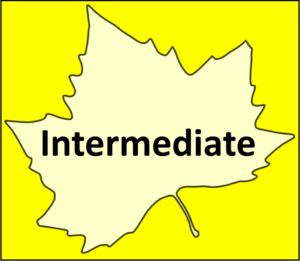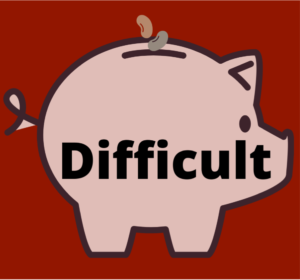
Tomato
Typically thought of as Italian, tomatoes were not originally from Italy. Tomatoes came to Europe from South America in the 16th century. A member of the nightshade family, this fruit lends itself to both sweet and savory dishes.
Tomatoes come in indeterminant and determinant varieties. Determinate are typically bush and will produce all at once. Indeterminate are typically long vines that will produce continually (Indeterminate grows INTO summer, that is how I remember which is which.)
|
Beef Steak: Alice’s Dream; Brandywine Red; Classic Beef Steak; Great White; Hugh’s; Large Barred Boar; Orange Accordion; Super Beef Steak; Zapotec Oaxacan Ribbed Cherry: Black Cherry; Litghi; Red Currant; Rosella; Wasipinicon Peach Dwarf: Orange Hat Globe: Ace 55; Bonny Best; Carbon; Rutgers; Principle Borghese; Wood’s Famous Brimmer; Wooly Kate Yellow Plum: Amish Paste; Rio Grande; Roma; Roma VF; San Marzano Stuffing: Get Stuffed |
|
Solanum lycopersicum Litchi: Solanum sisymbriifolium |
|
Intermediate |
|
Difficult |
|
4 years if properly cured, dried, and stored. |
|
Annual |
|
7-14 days |
|
None |
|
1/4 inch |
|
Indeterminate (produces throughout the growing season on a large vine)
Determinate (produces one heavy crop)
|
|
Full Sun |
|
Beef Steak:
Cherry:
Dwarf:
Globe:
Plum:
Stuffing:
|
|
February, March, April, May, and June |
|
Yes |

Growing Tips


ONLY for tomatoes that grow to a MAXIMUM height of 3 feet, use a 5 gal container. Usually, this is a determinate or bush variety.
When to Start
Spring: Start indoors 6-8 weeks before the last frost. (End of February/Beginning of March for GA.)
Spring Transplant: After all danger of frost has passed. (May 1 for Jefferson GA.)
Fall: Start indoors. Count back the number of days to harvest from the last average frost date. Then add to that an additional 6-8 weeks for the seedlings to grow. (Start indoors May through the beginning of June for GA)
Fall Transplant: UGA states the fall transplant dates for tomatoes are June 15-July 15 for GA.
How to Start
Seeds normally take six to eight weeks of growing and must be hardened off before they are transplanted into the garden. Fill seed cells or pots with pre-moistened seed starter mix.
They will germinate faster with a heat mat. They can be started in small flats and then potted up into containers with adequate drainage holes once seedlings have become sturdy enough. (Seedlings that have at least 2-3 true leaves.)
Sow 2-4 seeds per cell and cover lightly with seed starting mix. Place under grow lights. Thin the seedlings to one plant per pot and pot up as needed.
Care
Transplant outdoors after danger of frost has passed and soil temps are above 55°F. Plant in full sun and protect from wind. Space plants 3 feet apart. All tomatoes will need a stake or cage for support and they will need help climbing the cage. Gently lift branches and let them rest on the cage.
Tomatoes are picky about temperatures. They require an average temperature of 65-85 F to ripen. If temperatures get higher they won’t set on and would benefit from some afternoon shade.
In some parts of the country (GA and other southern states), there is a fungus that lives in the soil that tomatoes are susceptible to getting. Prune the lowest leaves and keep branches off the ground, as this will help reduce the risk of fungus.
Tomatoes require a lot of water. Even watering will help prevent tomatoes from splitting. Bottom watering is also a MUST. Any soil that splashes onto the leaves is a fungus ready to grow and destroy the plant. Wet leaves are also susceptible to fungus and blight. Use soaker hoses or drip irrigation.
Mulch is also beneficial in suppressing weeds and helping to retain soil moisture. To help prevent birds from pecking your tomatoes, pick them when they show any color change and place them on a countertop to finish ripening. For more planting tips and hacks, see “12 Tomato Planting Hacks.” The link is below.
Harvest
Tomatoes can be harvested any time they are a mature size. They can be green or fully red or whatever their ripe color is. Tomatoes will continue to ripen off the vine.
Pest Management
Tomatoes have several pests that are a real nuisance and destructive to the plants. Aphids, tomato hornworms, root-knot nematodes, and the Eastern leaf-footed bug are some. Companion planting and trap cropping are hugely beneficial in greatly reducing these pests. Marigolds will help with most of these pests and sunflowers will take care of the rest.
Marigolds and sunflowers are, in this author’s opinion, some must-have flowers when planting tomatoes.
Pro Tip!
Incompatibles: Corn, dill, fennel, kohlrabi, and potatoes
Grows well with: Brassicas (kale, broccoli, etc.), carrot, celery, chives, cucumbers, melon, onions, peas, peppers, marigolds and nasturtiums.
My personal experience
My favorite thing to do growing up was squishing out the juice of tomatoes for canning. I grow my own tomatoes just so I can make homemade tomato juice. I won’t go into great detail about my first time growing tomatoes went back when I knew nothing. (I had to replant 3 times that year!)
I’ve since learned a great deal and my 12 tomato planting hacks go into this in great detail. I will plant sunflowers at the ends of my rows and alternate tomatoes with marigolds.
No matter what steps you take, you will always have to look for ‘worm sign’ and pick off the tomato hornworms. My favorite varieites to grow are roma, better boy, and the porterhouse. I use these mainly in canning to make the juice taste like it did growing up. Every year I also try various other kinds, mostly unusual varieites.

Seed Saving

Isolation Distance
Almost all modern tomatoes can be safely grown without isolation and will not cross—’currant’ tomatoes (such as Cherry Tomatoes), and ‘potato leafed’ tomatoes (such as Brandywine) are possible exceptions and may cross other currant or potato-leaf varieties.
Instructions
Grow as many standard tomatoes as desired, but grow only one ‘currant’ tomato or one ‘potato-leaf’ tomato at a time to ensure purity (or cage them, or separate varieties by 500 feet). Currant and potato-leaf tomatoes will not usually cross with common tomato varieties.
Allow tomatoes to ripen thoroughly on their vines to at least the eating stage (overripe is better) before harvesting them to collect their seeds. Upon harvesting, tomato seeds are best fermented in order to remove a germination-inhibiting gel that covers the seeds and to kill diseases. In nature, fermentation of fallen ripe fruits removes this gel, and this process is imitated when preparing tomato seeds.
Step 1: Make a label with the variety of the tomato and any traits you noticed. (Resistant to blight, had really good flavor, bigger size, etc.) Squeeze the pulp from the ripe tomato into a bowl, keeping the label with the bowl. If there is not enough liquid, add enough water to help the seeds separate from the pulp.
Step 2: Let it sit in a warm spot to ferment for 2-3 days and allow mold to form. (Yes, it stinks and is gross. Put it somewhere where you won’t pass by it very often.) TIP: use a tall canning jar. This will help control some of the odor and allow you to see the progress of the seeds. Cover the top of the jar with a cheesecloth or a paper towel, securing with a rubber band, to keep any insects out and yet allow some airflow.
Step 3: Once the layer of mold has formed, lift it off with a fork. This will make rinsing easier. Add some water and mix or shake the jar. The viable, good seeds will sink to the bottom and the bad seeds, which won’t germinate, will float. Skim off the bad seeds and toss. Pour the rest of the seed/pulp mixture through a strainer and rinse. Remove any remaining bits of mold and pulp to leave only clean seeds.
Step 4: Dry your tomato seeds on a piece of glass or a shiny plate—the wet seeds will stick to paper and be difficult to remove without damaging them. Keep the label with the seeds. (All tomato seeds look the same.) Shake the seeds daily to make sure they dry evenly. Don’t speed up the drying process or you could damage or kill the seeds. Once they are thoroughly dry, store dried seeds in labeled, paper seed bags. Drying could take a week or more.

Features
Beefsteak:
- Alice’s Dream: Heirloom. Indeterminate. The fruit has a rich, deep flavor. It is a beautiful fruit that is yellow with red striping and a blue blush hue.
- Brandywine Red: Heirloom. Indeterminate. The pink-red fruit is flavorful but not acidic.
- Classic Beefsteak: Heirloom. Determinate. Large fruit that can reach 1-2 LBs. It has a deep, red flash with a classic old-time tomato flavor. Meaty and firm flesh that is good on sandwiches.
- Great White: Heirloom. Indeterminate. The fruit has a fruity flavor and is a great slicer.
- Hugh’s: Heirloom. Indeterminate. A yellow beefsteak that is a good producer. It can be susceptible to sunscald due to the plant’s sparseness of leaves.
- Large Barred Boar: Heirloom. Indeterminate. A pink-brown fruit with green stripes. The 8-12 ounce fruit is flavorful, meaty, and has pink flesh.
- Orange Accordion: Heirloom. Indeterminate. The massive tomato is orange and highly ruffled with a sweet and fruity flavor. It has juicy, meaty flesh good for sauces, slicing, and stuffing. It can reach 20 oz.
- Super Beefsteak: Indeterminate. Large 17-oz fruit is flavorful and meaty.
- Zapotec Oaxacan Ribbed: Heirloom. Indeterminate. Large, ruffled, and pink fruits have a yellow blush and weigh up to 1 lb. They are somewhat hollow and have a mild, sweet flavor. Ideal for stuffing, baking, and grilling.
Cherry:
- Black Cherry: Heirloom. Indeterminate. Large vines that produce well. Small grape-like tomatoes. Rich flavor.
- Litchi: Heirloom. Indeterminate. Good for chutneys and mock cherry pies with their sweet, mild cherry flavor. Harvest with gloves as the plant is thorny.
- Red Currant: Indeterminate. Large yields of round, red fruit that have a sweet-tart flavor.
- Rosella: Heirloom. Indeterminate. Purple, pink fruits are great fresh or cooked.
- Wapsipinicon Peach: Heirloom from Iowa. Indeterminate. The small 2-inch fruits are fuzzy like a peach. They have a complex, spicy flavor that is also fruity.
Dwarf:
- Orange Hat: Heirloom. Determinate. One of the smallest tomato plants growing only 6-9 inches tall, making it perfect for small spaces. The fruit is sweet.
Globe:
- Ace 55: Determinate. A vigours plant that produces 8-ounce red fruits.
- Bonny Best: Heirloom. Indeterminate. A heavy producer of medium-sized globe fruit. They are red, meaty, and flavorful.
- Carbon: Heirloom. Indeterminate. Winner of the 2005 “Heirloom Garden Show” for best-tasting tomato. This purple fruit has a complex flavor.
- Rutgers: Heirloom. Indeterminate. The red fruits have heavy walls and small cells.
- Principle Borghese: Italian heirloom. Determinate. Vines yield heavy clusters of 1-2 oz fruit. It has a rich tomato taste that is wonderful for sauces.
- Wood’s Famous Brimmer: Heirloom. Indeterminate. The fruit is 2-4 inches and perfect for sandwiches.
- Wooly Kate Yellow: Heirloom. Indeterminate. The plants produce yellow with blue, shouldered fruit with fuzzy leaves.
Plum:
- Amish Paste: Heirloom from Wisconsin. Indeterminate. Many believe this is the best paste tomato. This Roma-type tomato is giant and blocky with wonderful flavor that is perfect for pastes and canning.
- Rio Grande: Heirloom. Indeterminate. A good producer that is disease-resistant. Good for sauces, pastes, and juicing. Fruit is 6-7 oz.
- Roma: Heirloom. Determinate. The classic choice for sauces and pastes.
- Roma VF: Heirloom. Determinate. The classic choice for sauces and pastes. But this variety is resistant to Verticillium and Fusarium wilts, hence the VF.
- San Marzano: Italian heirloom. Indeterminate. A good paste and canning tomato with roma-shaped fruit. Good disease resistance.
Stuffing:
- Get Stuff: Heirloom. The fruit has golden streaked skin that is hollow and thick-skinned, making it a perfect stuffing tomato. The bell pepper-shaped fruit is 5-7 oz. The seed cluster is easily scooped out. The tomato is good raw, cooked, and stuffed.

See 12 Tomato Planting Hacks for great tips on how to get awesome tomatoes, prevent blossom end rot, help reduce pesky nematodes, and more!
See Starting Seedlings for how to get strong, healthy seedlings!

Salsa Recipe
There is a lot of flexibility with this recipe. You can turn this into a roasted version, spicy, smooth, or chunky. There are many other combinations, but here are three that are good to try.
Makes about 1 ½ pints
- 5-6 Ripe tomatoes, peeled (2 large and rest small)
- ½ Onion
- 2-3 Peppers (any combo of bell/banana/sweet/hot that adds up to 1 med bell and 1 banana)
- 2 Cloves garlic (¼ t if using garlic powder)
- Handful of fresh cilantro
- ½ handful fresh parsley
- Salt to taste
- Juice of ½ to 1 lime (1-3 t if using concentrate)
Instructions
This is always better on the second day as the flavors have time to develop.
To peel tomatoes, bring a large pot, filled ½ full of water, to a boil. Wash tomatoes and cut off any bad spots. Cut the tops off and place them in boiling water for 30 seconds. Remove tomatoes from the pot and place them in an ice bath or on a plate to cool.
While tomatoes are cooling, dice onion, peppers, and garlic and place in a food processor. Tear cilantro and parsley and add the rest of the ingredients to the mixture. Once the tomatoes are cool enough to handle, remove the skins. Cut into large chunks.
Using a food processor or hand blender, puree all ingredients together. Taste to see if the balance is right and adjust anything to taste.
To make it chunky
Dice the tomatoes, onion and peppers. For firmer tomatoes, don’t blanch, just skin the tomatoes and dice the flesh. Finely chop the herbs and garlic. Add the rest of the ingredients. Mix.
To Roast Peppers for a roasted version
- Preheat your oven’s broiler. Cut peppers in half and remove ribs and seeds.
- Arrange the peppers on a baking sheet skin side up and place the baking sheet on the highest rack in your oven.
- Keep a watchful eye on the peppers. When dark splotches begin to appear on the peppers, remove them from the oven and place them in a large bowl. Cover the bowl with plastic wrap, making sure that it is sealed air-tight all the way around. The steam from the trapped hot peppers will loosen the skins.
- Once the peppers are cool enough to handle (probably about 15 to 20 minutes), hold one end of the pepper down on a flat surface and gently peel the skin off of each pepper. The skin should slide off fairly easily.
You May Also Like:
Why you should plant Marigolds and Sunflowers with Tomatoes
Pest Management: Companion planting and trap crops
